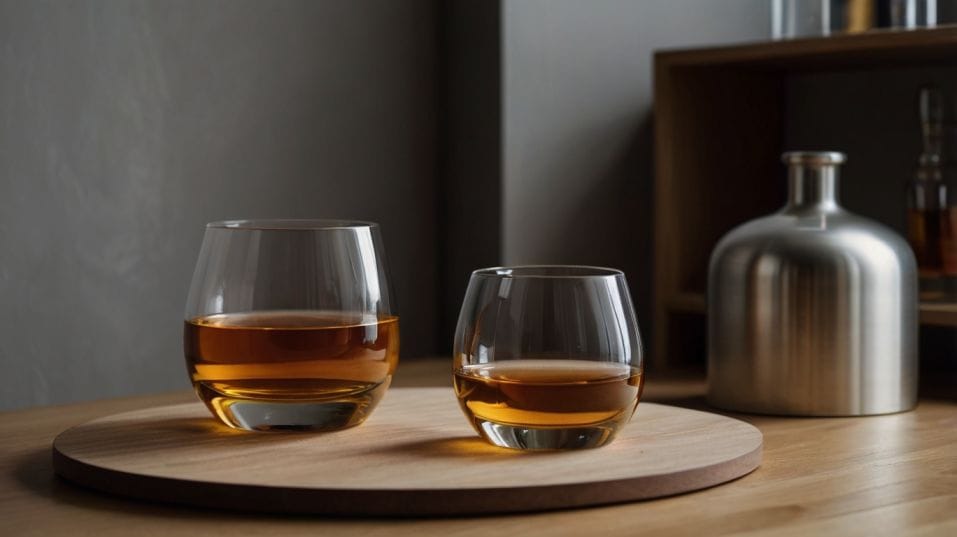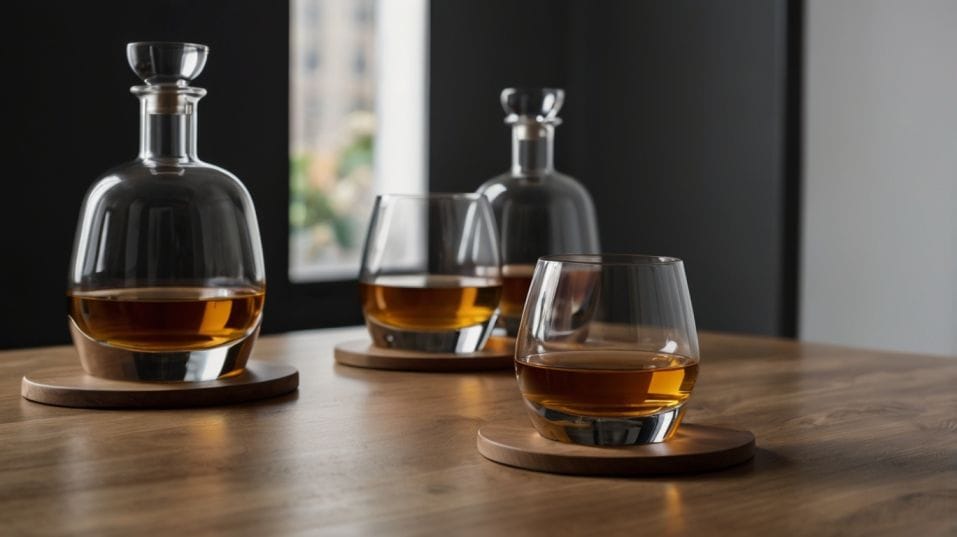Whiskey Tasting for Total Newbies
New to whiskey? Learn how to taste with confidence. Build your palate, skip the snobbery, and unlock what makes each sip unique.

Ever wonder how to really taste whiskey—not just drink it? You don’t need rare bottles or fancy gear to get started. Just curiosity. Tuning in to flavor, texture, and aroma can open a whole new world.
Whether you’re holding your first Glencairn or just sipping from a wine glass, this guide will sharpen your senses, not your image. Let’s make your first tasting experience less intimidating—and way more rewarding.
The Setup: Don’t Overcomplicate It
Start simple. Grab a glass that funnels aroma—a Glencairn, a copita, or a small wine glass. You want something that lets you swirl without sloshing and channels the scent toward your nose.
Pour a modest amount, maybe an ounce. Leave the ice for cocktails. Right now, you’re tasting, not chilling. If your whiskey clocks in above 46% ABV, a few drops of room-temperature water can help open it up. It’s not cheating. It’s clarity.
Let it sit for a minute. Temperature, time, and oxygen all affect flavor. A closed-up pour won’t show you its full hand right away. Give it a breath.

Nosing: The Real First Taste
Your tongue only tells part of the story. Most of flavor is smell, so your nose does the heavy lifting. Bring the glass up slowly. No deep inhales.
Open your mouth slightly and breathe in through your nose. That airflow balance stops the alcohol vapors from burning out your receptors.
Notice the shape of the aroma. Is it sharp or rounded? Does it come off as bright, woody, dark, spicy, fruity, earthy? You’re not decoding secrets here; you’re just paying attention. The more you do it, the more nuance you’ll start to pick up.
Don’t be afraid to step back, then come back. Aromas shift. What smells like fresh sawdust one second might remind you of toffee ten seconds later. Stay curious.
First Sip: Set Expectations Low
That first sip is never the best. Your palate isn’t ready. Let it coat your tongue, then swallow. Wait. That was the warm-up.
Now take your second sip—slightly bigger. Let it rest on your tongue for a few seconds. Swirl it around gently. Then swallow slowly. You’ll notice more this time: flavor, texture, aftertaste.
Try to track three things: how it starts (sweet, dry, floral), how it evolves (spicy, bitter, rich), and how it finishes (short, sharp, long, mellow). You don’t need fancy adjectives yet. Just learn the flow.
Add a drop or two of water. Swirl. Try again. You’ll notice changes—sometimes subtle, sometimes dramatic. The nose may open up. Harshness may fade.
Sweet notes might climb to the surface. Water isn’t weakening the whiskey. It’s revealing it.
Texture, Body, and Heat
Texture tells you about maturity and cask character. A good whiskey has weight. Not syrupy, not thin. It should feel alive in your mouth—like it has shape and dimension.
Heat (the alcohol burn) shouldn’t dominate. If it overwhelms the flavor, that whiskey wasn’t ready for bottling, or it needs more time to breathe.
If the burn is there but the flavor persists, that’s tension—a good thing. Tasting isn’t about comfort; it’s about engagement.
Understanding Style and Structure
As a beginner, your biggest ally is comparison. Don’t just taste a single whiskey in isolation.
Taste across categories: bourbon vs rye, single malt vs blended malt, peated vs unpeated, sherry-cask vs ex-bourbon cask. Ask: what do they have in common? What’s different?
This isn’t school, and there’s no quiz. But the patterns you start to notice will build your instincts.
You’ll get better at identifying the signature of American oak, the funk of pot stills, the dry spice of rye grain, the smoke fingerprint of Islay peat. These aren’t party tricks. They’re the building blocks of whiskey literacy.
Notes Matter—But Not Like You Think
You don’t need a journal full of purple prose. Just jot a few real thoughts: What did it smell like? How did it taste? Did anything surprise you? Would you buy it again?
Over time, your notes become a flavor map. They show your preferences and help you track what styles or regions consistently deliver.
You’ll also start spotting flaws: the too-young bourbon that tastes like glue, or the overpriced scotch that flattens out halfway through the sip.
The point isn’t to sound like a critic. It’s to sharpen your senses and buy smarter next time.
Build a Palate, Not a Pedestal
Ignore the urge to chase unicorn bottles or expensive age statements. They’re not training wheels; they’re distractions. Start with affordable, well-made expressions. Focus on the flavors you love, not the labels other people covet.
If you like a $35 rye that tastes like gingerbread and orange peel, great. If you find joy in a smoky dram that reminds you of a beach bonfire, chase that.
Whiskey isn’t about prestige. It’s about connection. Your palate is your compass—not your social feed.
Final Thoughts
This isn’t just about drinking. It’s about developing taste. The goal is fluency—to understand what you’re tasting, why it matters, and how to find more of what you love.
So here’s your move: pick two whiskeys you’ve never tried. Pour them side by side. Take your time. Nose them. Sip them.
Write down what stands out. Don’t worry about being right. Worry about being aware. Taste deeper. Learn faster. Build your whiskey instincts—today.




